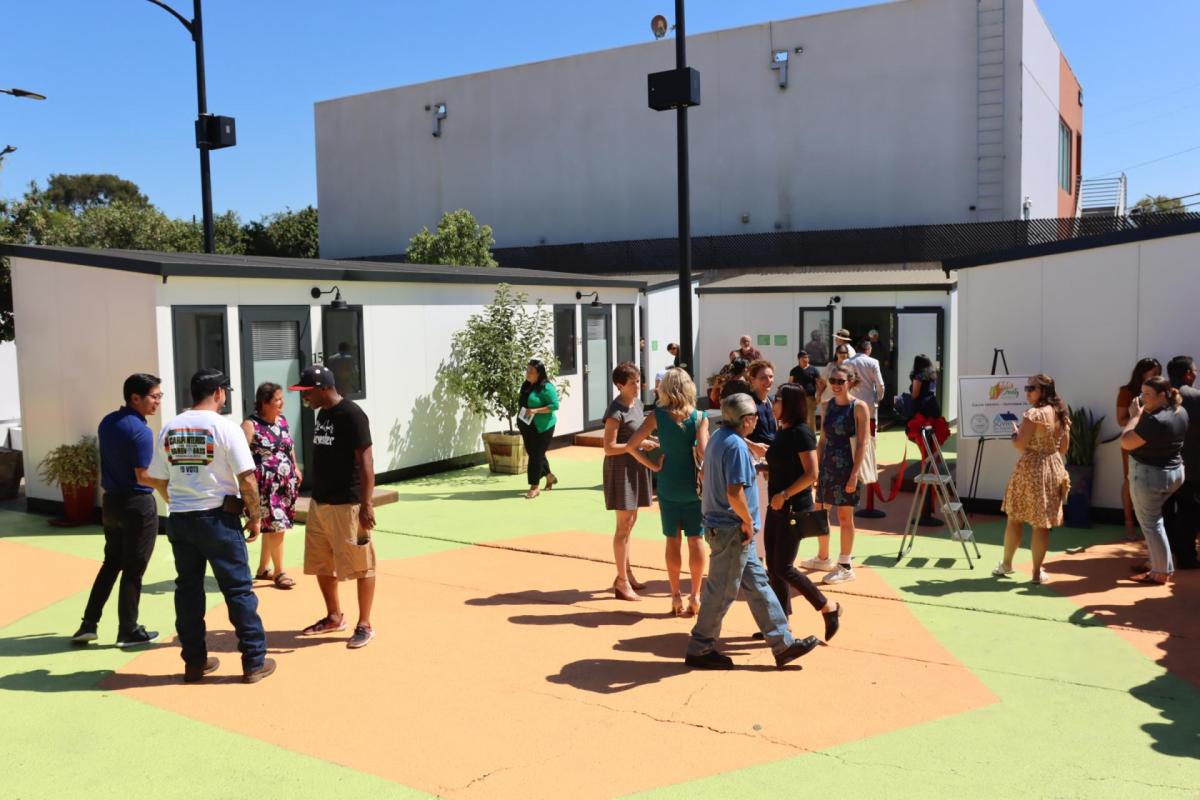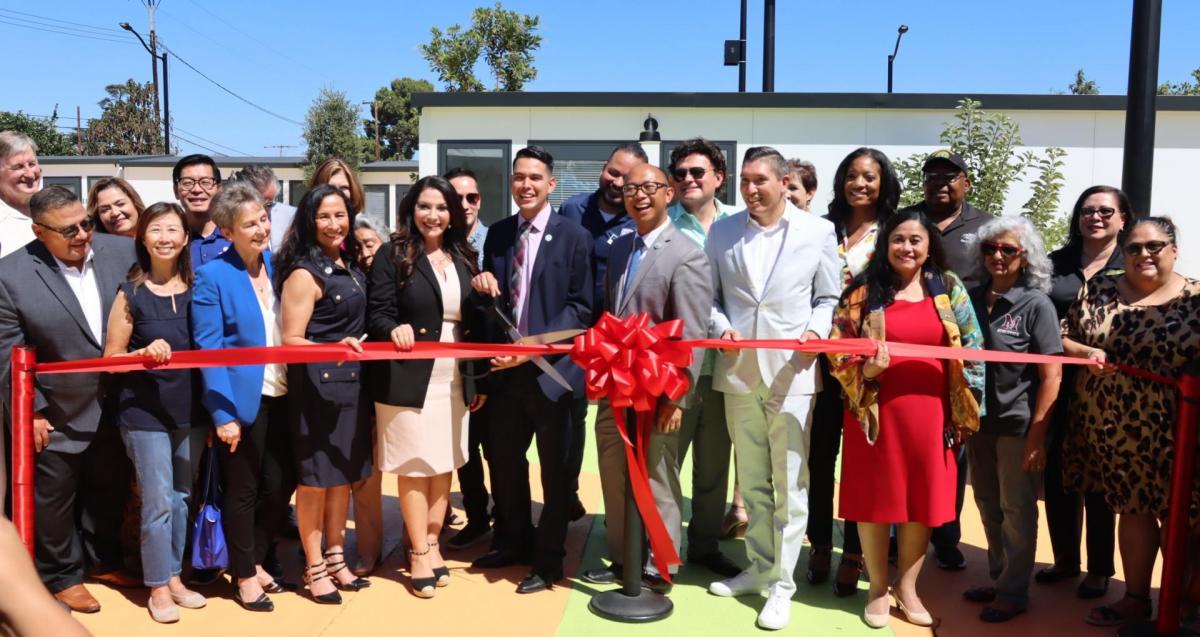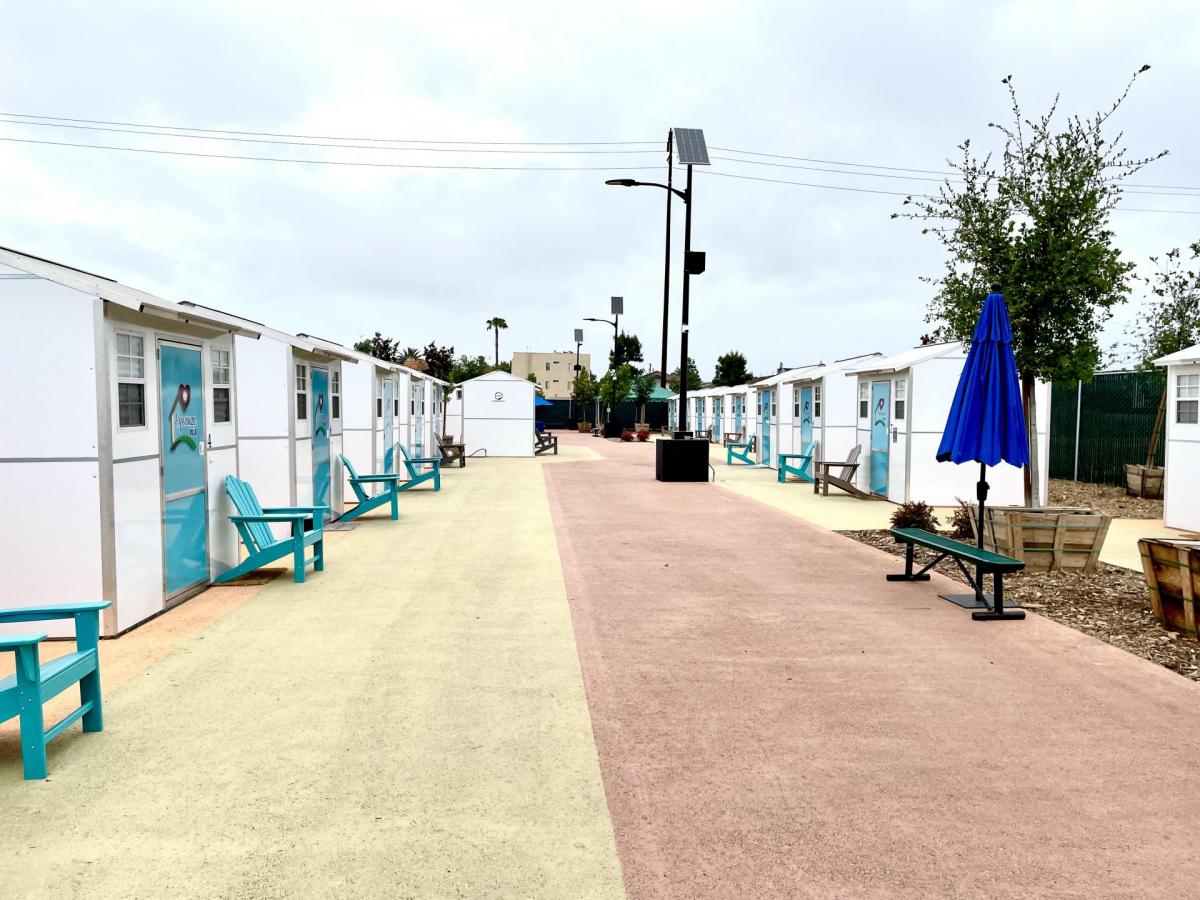Baldwin Park’s tiny home villages transformed a crisis into community
The city of Baldwin Park received the 2025 Helen Putnam Award of Excellence in the Housing Programs and Innovations category. For more information about the award program, visit calcities.org/helen-putnam-award-for-excellence.
When Baldwin Park city officials learned that a staggering 556 residents were experiencing unsheltered homelessness in 2020, they knew they had to think beyond traditional solutions. The Los Angeles County city had seen its homeless population more than double between 2019 and 2020, with residents camping in public spaces and emergency services straining to keep up.
The path to a solution would be neither simple nor conventional — especially amidst a global pandemic. Recognizing that parks were becoming de facto shelters, the Recreation and Community Services Department collaborated with other city departments to lead a swift, coordinated push for action.
“As a city, we realized we couldn’t just manage this crisis. We had to completely change the way we approached it,” said Baldwin Park Mayor Alejandra Avila. “That meant listening to our community, finding creative solutions together, and moving quickly and boldly to give people a safe place to call home.”
What followed was an ambitious, community-driven effort that, in five years, resulted in an 80% decline in homelessness, turning the city into a leading example of success.
Building safe havens
City staff brought together community leaders, homelessness experts, architects, and faith-based partners for a series of listening sessions and to ask a central question: How can we offer both immediate relief and a pathway to lasting stability?
The answer took shape as two tiny home villages. But community leaders wanted to do more than simply provide a roof: They wanted to create safe, private, and furnished spaces where people could rebuild their lives with dignity.
Rather than traditional congregate shelters, the villages offer units with locking doors, full-size beds, and essential furnishings. Outdoor spaces — common areas, shaded seating, and picnic tables — creating a welcoming and livable environment.
Early in the process, some residents voiced concerns about public safety and property values. The city responded by going door-to-door, hosting community meetings, and offering tours of the sites.
As residents saw the facilities up close, many shifted their stance from skepticism to support. They recognized the project as a way to restore stability and dignity to neighbors in need.
“The community engagement process was transformative for everyone involved,” said Council Member Emmanuel J. Estrada. “It helped dispel misconceptions about our homeless population and displayed our neighbors as fellow human beings deserving of dignity. When people saw our vision for these facilities, they understood this wasn’t just about housing. It was about healing our entire community.”
Piece by piece, Baldwin Park worked to assemble a funding puzzle that allowed the projects to move from concept to reality.
The city invested $2.15 million to buy the properties. The San Gabriel Valley Regional Housing Trust provided $1.25 million to support construction. Millions more came from a combination of regional, state, and federal sources, including the American Rescue Plan Act.
As momentum built, the city secured more support from state, regional, and nonprofit partners to sustain operations. City staff also worked with Habitat for Humanity, the Southwest Carpenters, and IKEA to help stretch resources and furnish the units.
These partnerships were essential to the success of this program. By cultivating regional support and leveraging diverse funding sources, Baldwin Park maximized community benefit, demonstrating the power of strong coalitions to deliver meaningful results.
Changing lives
In 2021, Esperanza Villa opened its doors with 25 units for single adults. The 16-unit Serenity Homes followed in 2022, helping parents, children, and even pets to stay together during a difficult transition. City Net manages daily operations, ensuring residents have access to nutritious meals, security, case management, health services, and housing navigation.
For Mary Peña, who lost her apartment during the pandemic, the change was life-altering. “When they first told me I was going to move from a traditional shelter, I was overwhelmed with excitement, just knowing that I would have my own place to cook my dinner and sleep in my own bed,” Peña said.
With steady support from her housing navigator, Peña soon moved back into her own apartment.
Peña’s story isn’t unique. The city’s homeless population plummeted from 556 people in 2020 to 108 in 2025 — a reduction that far outpaces the greater San Gabriel Valley region.
The city’s success has drawn attention from cities across the country and earned coverage in regional media.
“Baldwin Park has proven that you don’t need to be a big city to create big change,” said Marisa Creter, executive director of the San Gabriel Valley Council of Governments, which partially funded the efforts and coordinates homelessness initiatives in the San Gabriel Valley. “Their success serves as a model for cities to reimagine what’s possible when you treat homelessness not as a problem to manage, but as an opportunity to embrace innovative solutions and lead with dignity and compassion.”
Manuel Carrillo Jr. is the chief executive officer for the city of Baldwin Park. He can be reached at MCarrillo@BaldwinParkCA.gov or (626) 813-5204, ext. 482. Watch this video for an overview of the project.



